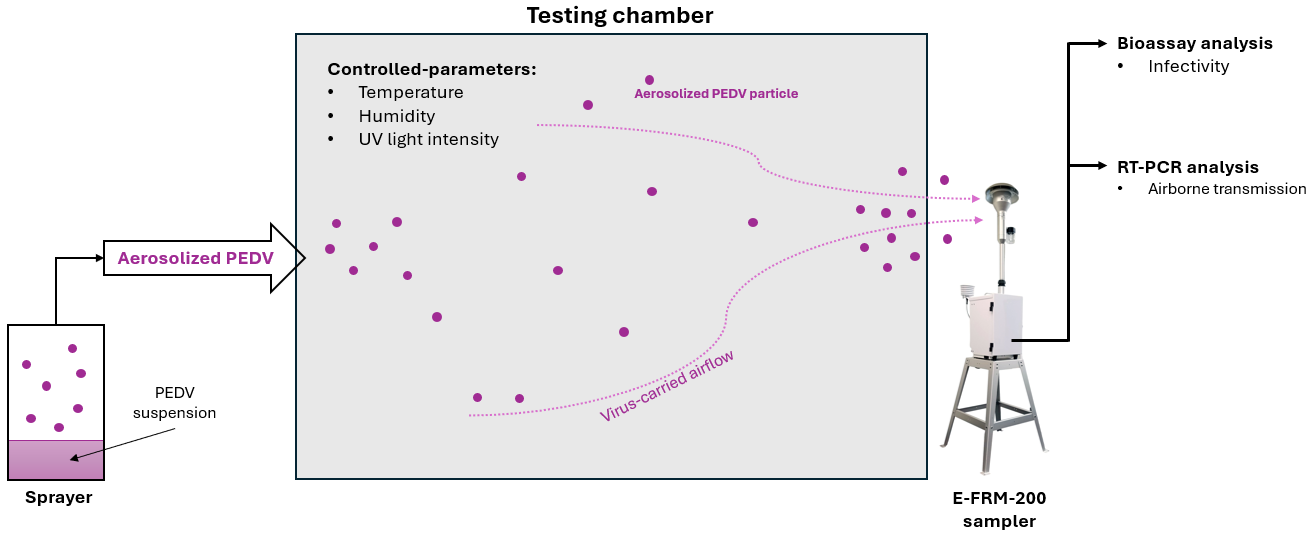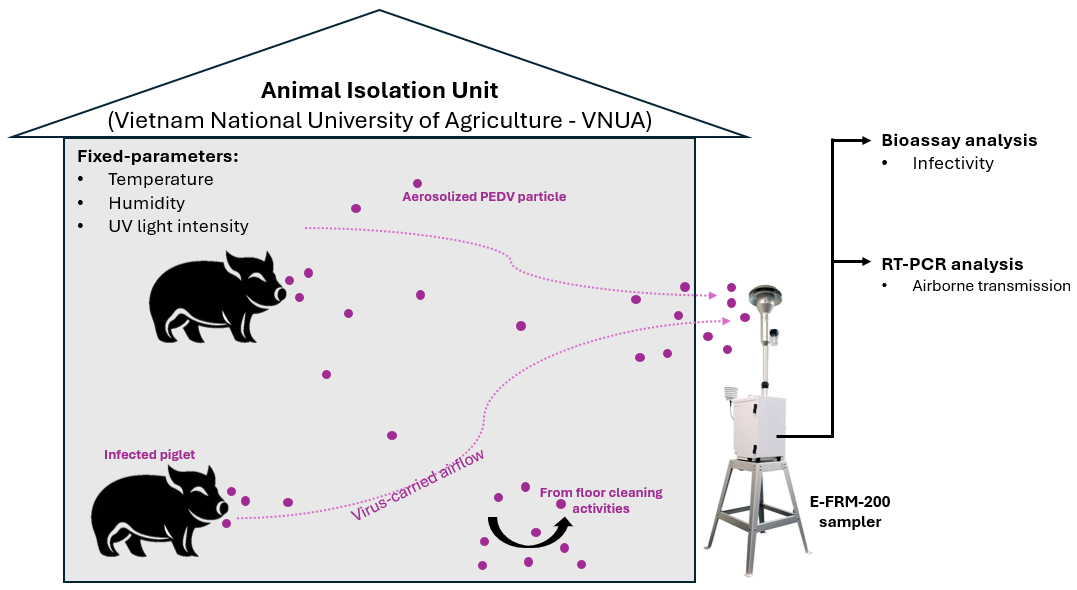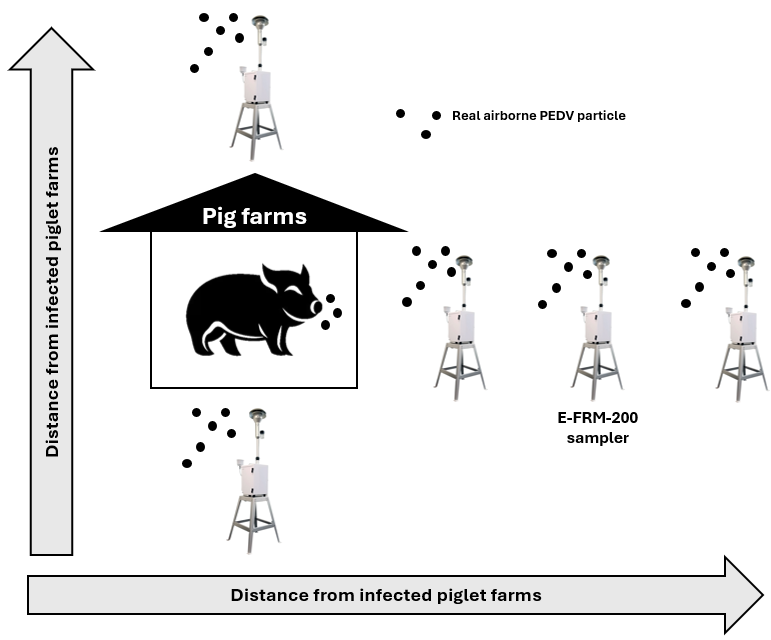Exploring the potential contribution of airborne transmission of the Porcine Epidemic Diarrhea virus (PEDV) to the spread of Porcine Epidemic Diarrhea (PED) disease between pig farms in Northern Vietnam
Person In Charge
- Nhan Dinh Ngo, PhD
Objectives
Porcine epidemic diarrhea virus (PEDV) is identified as the main causative agent of porcine epidemic diarrhea (PED) that causes massive economic losses in the swine industry, particularly due to high mortality in piglets. A recent study has demonstrated that PEDV can become airborne, remain infectious while suspended in the air, and travel long distances from infection sources [1]. However, the viability of airborne PEDV strongly depends on environmental factors such as UV light, relative humidity, and temperature [1] which vary across different countries or regions. In Southeast Asia, especially in Vietnam, the PED infection rate is highest in the winter season when high humidity, low temperature, and UV light intensity can promote the survival of airborne PEDV. Although PEDV infection among pig farms predominantly occurs via the fecal-oral route, airborne transmission of PEDV among farms has still been largely overlooked. Therefore, in this project, we aim to assess the following under specific climate conditions in northern Vietnam:
- Airborne transmission route of PEDV
- Infectivity of airborne PEDV
- Potential contribution of airborne PEDV to the spread of PED disease
Through these assessments, we aim to achieve the following objectives in future works:
- Numerical re-construction of PEDV spread using a physic-informed neural network and computational fluid dynamics (CFD) technique
- Develop smart AI-driven intervention solutions for pig farms in Northern Vietnam
Methods
Different experimental schemes are illustrated in detail from Figure 1 to Figure 3, particularly focusing on (1) the PEDV persistence examinations under different environmental conditions that mimic those in northern Vietnam (Figure 1), (2) the generation of airborne PEDV from infected piglets and cleaning activities (Figure 2), and (3) investigation of airborne traveling distance and infectivity of PEDV generated from known infected farms (Figure 3). For collecting the airborne PEDV, an air sampler (E-FRM-200, METONE, USA), as a standard sampling device, will be employed. Subsequently, bioassays will be used to determine airborne PEDV infectivity, and RT-PCR will be utilized to confirm the presence of airborne PEDV.



References
[1] Alonso, C., Goede, D.P., Morrison, R.B. et al. Evidence of infectivity of airborne porcine epidemic diarrhea virus and detection of airborne viral RNA at long distances from infected herds. Vet Res 45, 73 (2014)